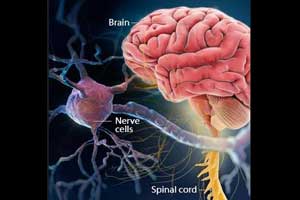- Home
- Editorial
- News
- Practice Guidelines
- Anesthesiology Guidelines
- Cancer Guidelines
- Cardiac Sciences Guidelines
- Critical Care Guidelines
- Dentistry Guidelines
- Dermatology Guidelines
- Diabetes and Endo Guidelines
- Diagnostics Guidelines
- ENT Guidelines
- Featured Practice Guidelines
- Gastroenterology Guidelines
- Geriatrics Guidelines
- Medicine Guidelines
- Nephrology Guidelines
- Neurosciences Guidelines
- Obs and Gynae Guidelines
- Ophthalmology Guidelines
- Orthopaedics Guidelines
- Paediatrics Guidelines
- Psychiatry Guidelines
- Pulmonology Guidelines
- Radiology Guidelines
- Surgery Guidelines
- Urology Guidelines
AAN: New Guideline on Therapies for multiple sclerosis

The American Academy of Neurology (AAN) has issued a new practice guideline regarding the use of disease-modifying therapies (DMTs) for adults with multiple sclerosis (MS).They provide updated guidance on starting, switching, and stopping treatment and recommend an earlier start to treatment rather than later in the disease course.The guidelines were presented at the American Academy of Neurology (AAN) 2018 Annual Meeting have been published in the journal Neurology.
The Guideline provides recommendations on initiating, switching, and discontinuing DMTs in patients of all types of demyelinating diseases including relapsing-remitting MS (RRMS), secondary progressive MS, primary progressive MS (PPMS), and clinically isolated syndromes of demyelination. The recommendations were based on findings from a systematic review and supported by related evidence, principles of care, and inference from evidence.
A total of 30 recommendations were included in the guideline, with 17 statements addressing DMT initiation, 10 referring to DMT switching when breakthrough disease develops, and 3 regarding DMT discontinuation. The guideline also discusses the risks associated with DMT, including counseling about the possibility of progressive multifocal leukoencephalopathy (PML) in patients taking natalizumab, fingolimod, rituximab, ocrelizumab, and dimethyl fumarate.
Key recommendations include:
- It is better to start taking drugs for multiple sclerosis early on, rather than letting the disease run its course.
- Clinicians should counsel about comorbid disease, adverse health behaviors, and potential interactions of the DMT with concomitant medications when people with MS initiate DMTs
- After discussing the risks and benefits, clinicians should prescribe DMT to people with a single clinical demyelinating event and 2 or more brain lesions characteristic of MS who decide they want this therapy
- Clinicians should offer DMTs to people with relapsing forms of MS with recent clinical relapses or MRI activity
- Clinicians should prescribe alemtuzumab, fingolimod, or natalizumab for people with MS with highly active MS
- Clinicians should offer ocrelizumab to people with PPMS who are likely to benefit from this therapy unless there are risks of treatment that outweigh the benefits
- People with MS with serious infections potentially linked to their DMT should switch DMTs (does not pertain to PML management in people with MS using DMT)
- Clinicians should monitor the reproductive plans of women with MS and counsel regarding reproductive risks and use of birth control during DMT use in women of childbearing potential who have MS.
- Because of the high frequency of severe AEs, clinicians should not prescribe mitoxantrone to people with MS unless the potential therapeutic benefits greatly outweigh the risks.
- Clinicians may direct people with MS who are candidates for DMTs to support programs. Clinicians may recommend azathioprine or cladribine for people with relapsing forms of MS who do not have access to approved DMTs.
- Clinicians may initiate natalizumab treatment in people with MS with positive anti-JCV antibody indexes above 0.9 only when there is a reasonable chance of benefit compared with the low but serious risk of PML.
- Clinicians should offer ocrelizumab to people with PPMS who are likely to benefit from this therapy unless there are risks of treatment that outweigh the benefits.
More than 15 novel and highly effective disease-modifying therapies to treat the disease have emerged in last 20 years therefore an update of the previous therapeutic guidelines published by the American Academy of Neurology in 2002 was much needed for an appropriate and effective use of new and old agents in clinical practice,the authors opine.
The summary of practice guideline recommendations are available at : DOI: https://doi.org/10.1212/WNL.0000000000005347

Disclaimer: This site is primarily intended for healthcare professionals. Any content/information on this website does not replace the advice of medical and/or health professionals and should not be construed as medical/diagnostic advice/endorsement or prescription. Use of this site is subject to our terms of use, privacy policy, advertisement policy. © 2020 Minerva Medical Treatment Pvt Ltd